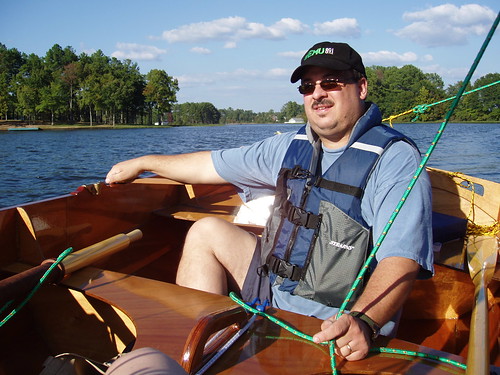Second coat

After all that sanding yesterday, I spent a good deal of time cleaning up my "shop". After sweeping, vacuuming, and wiping down the strakes, they got a second coat of epoxy. It was today that I noticed a couple of spots where I had sanded through the first coat down to the wood. Mostly it was at the one lousy scarf joint, where there was a high spot. But there were a couple of other little nicks where I wasn't paying complete attention with the sander. I tried to lay the second coat on a little heavier in these spots to make up the difference. But I will probably turn to the CLC boat builders forum to ask what I need to do in this case. Should I apply a third coat? A spot second coat in these areas? Nothing, and leave it to the varnish or paint to give supplemental waterproof-ness? Local temps are in the upper 60s, and so I can give the flip sides their second coat tomorrow. The second coat goes on much faster, and requires less epoxy than the first coat. Also, the roller bubbles settle out on their own and don't require tipping in now that the wood is sealed. Total hours 8.75.


1 Comments:
You mention a few epoxy "holidays," mostly from sanding. Don't put a third coat on now. The reason is that there are several steps later in the process where the entire assembled hull receives coats of epoxy, and those spots will get sealed up then.
You're not quite to that stage yet, but the only spots to obsess over epoxy coverage is on the inside of the air compartments. Moisture--and it can just be water vapor--in those compartments has an insidious way of staining wood. Passagemaker #2, which is in our showroom, has been used very hard this year and shows some small interior stains, probably because there were tiny pinholes in the epoxy coating.
Enjoyed reading your blog. Drop us a line any time you have questions. info@clcboats.com
Post a Comment
<< Home